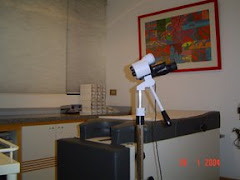
É muito comum observarmos a dúvida nos homens de quando é a época correta para procurarmos um urologista para avaliação de próstata. E muitos também desconhecem a forma correta de como isso é realizado. Esse artigo tem como objetivo, orientar a comunidade masculina.
O urologista deve ser procurado, independente da faixa etária, todas às vezes que há dificuldade para urinar, como por exemplo: jato urinário fino com pouca pressão e lento; sensação de ter que urinar várias vezes para sentir que conseguiu esvaziar a bexiga, i.e, ao término da micção, há sempre a sensação de que está "sobrando" alguma urina no interior da bexiga. Ter que forçar para iniciar a micção também é um sintoma, como se existisse alguma coisa impedindo a saída da urina. Além de sintomas como ardor para urinar e sinais de sangue na urina.
Quando não há histórico de câncer de próstata nos familiares mais próximos como pai, irmãos, avôs, o primeiro check up de próstata, desde que não haja queixas do paciente, deve ser feito a partir dos 50 anos. Agora se há histórico na família, recomendamos o primeiro controle a partir dos 40 anos.
Para a avaliação, o urologista precisará realizar algumas perguntas sobre a presença de alguns sinais ou sintomas que façam- no pensar em alguma doença de próstata. O exame físico com o toque da próstata através do ânus, ao contrário do que muitos pensam, ainda é INDISPENSÁVEL e esse é o maior motivo para que os pacientes retardem o primeiro check up, uma vez que por receio de ser mal interpretado ou "levar alguém a pensar que ele gostou", ninguém pode dizer que o exame seja tranquilo apesar de ser plenamente suportável. Sendo assim, quem nunca passou por um exame físico de próstata com toque, chega apavorado para a primeira consulta, mas eu mesmo posso constatar que após o exame físico, a grande maioria concorda que o exame é muito mais constrangedor do que doloroso.
Para complementar, são necessários os exames de ultrasonografia, que é o exame de imagem para avaliar alguma anormalidade na textura da próstata como a presença de um nódulo e o exame para dosagem do PSA (Prostatic Specific Antigen), ou seja, Antígeno Específico da Próstata. Esse último é feito através da coleta de sangue e tende a se alterar todas às vezes que há doença de próstata, principalmente um câncer. Mas outras situações como relação sexual, andar de bicicleta, biópsia de próstata, podem alterar o resultado sem que signifique câncer.
Agora que a dúvida foi esclarecida, está na hora de você avaliar se já chegou o seu momento de marcar uma consulta com um urologista e procurar encorajar todos os homens do seu convívio, a realizar o mesmo.















